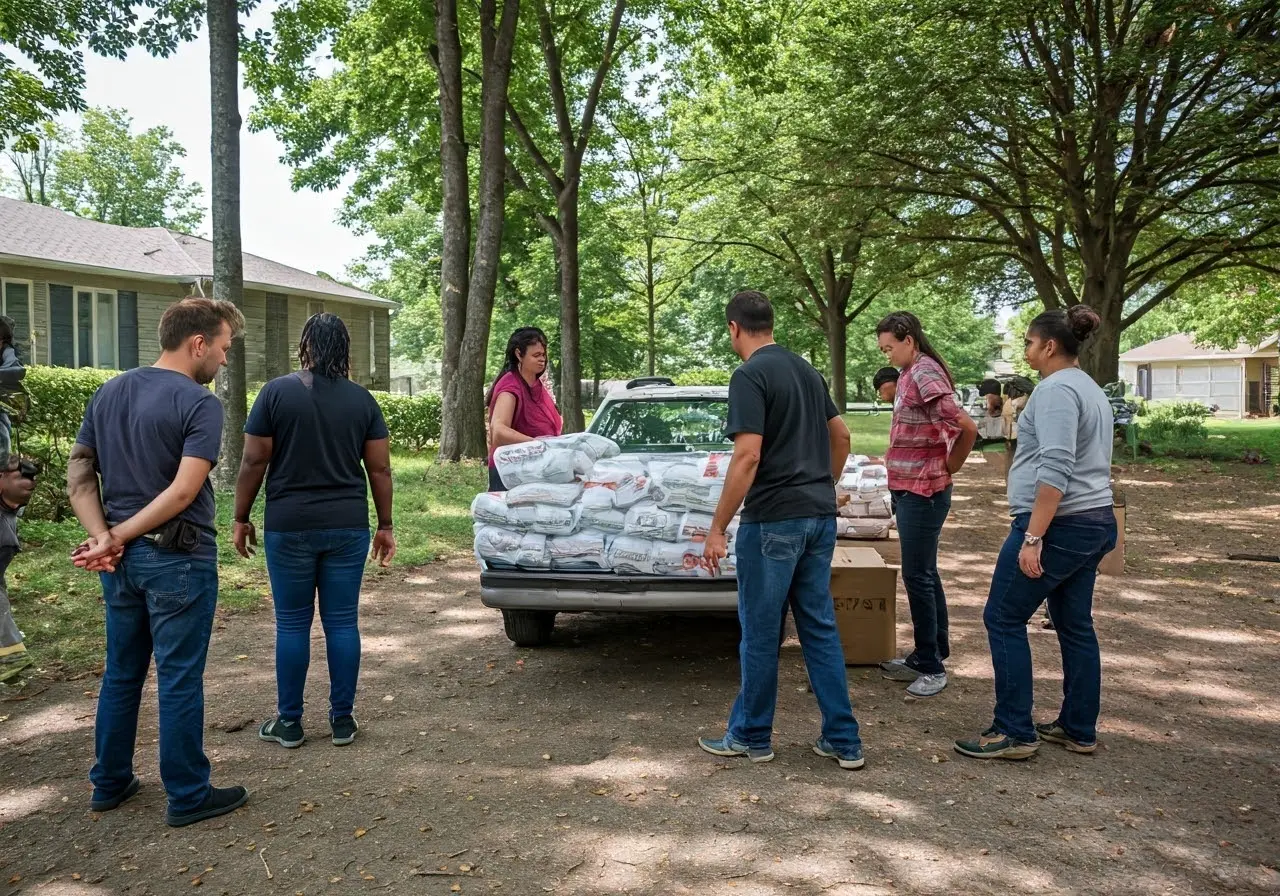
In times of disaster, communities often find themselves at the forefront of recovery efforts. It’s in these challenging moments that the true power of community comes to light. This blog explores how grassroots responses, volunteerism, and local knowledge play a crucial role in disaster recovery, transforming how we approach crisis management and long-term resilience.
The Role of Community Resilience in Disaster Recovery
Community resilience is the backbone of effective disaster recovery efforts. It involves the collective capacity of communities to adapt, learn, and bounce back from crises. Understanding the dynamics of resilience helps communities manage the social, economic, and emotional challenges they face in the wake of disasters. The resilience of a community is not just about physical infrastructure; it’s about the relationships, trust, and cooperation among its members. True resilience grows from the ground up, relying heavily on the ability of community members to come together, share resources, and respond to crises with unity and strength. As they navigate recovery, communities demonstrate remarkable innovation, finding solutions uniquely tailored to their specific needs and contexts.
Historically, communities have played a critical role in responding to crises. From neighborhood response teams to mutual aid groups, local initiatives are often the first to respond when disasters occur. These community efforts are bolstered by strong social networks that enable rapid mobilization and coordination in the wake of a disaster. Such networks foster resilience by providing emotional support, sharing critical information, and ensuring that the most vulnerable individuals receive timely assistance. It’s worth noting that individuals within these communities hold valuable insights and understanding of local vulnerabilities, allowing them to act swiftly and effectively.
Grassroots Response and Local Knowledge
Grassroots responses leverage local knowledge to address the immediate needs of affected individuals. Communities, familiar with their unique challenges and resources, are often the first to act, providing critical support when disaster strikes. This local knowledge is invaluable; it includes not only an understanding of the geographical landscape but also insights into societal structures and cultural nuances. Such knowledge helps tailor relief efforts effectively, ensuring that resources are distributed where they are needed most, and culturally sensitive approaches are employed.
Take, for example, the aftermath of Hurricane Katrina. Before larger organizations could mobilize, local groups sprang into action, distributing aid, and coordinating rescue missions. They utilized block-by-block knowledge of the city’s structure to navigate chaotic conditions effectively. These grassroots efforts demonstrate the critical advantage of local knowledge in disaster scenarios. When aligned with external resources and support, community-led strategies create a powerful synergy that boosts overall recovery efforts.
Volunteerism and Social Support Networks
Volunteerism is vital to disaster relief efforts. Social support networks mobilize quickly, offering resources and personnel. Whether through organized neighborhood response teams or informal mutual aid groups, volunteerism strengthens the fabric of community-led recovery. Volunteers are not simply an ancillary part of disaster recovery; they are essential, often filling gaps where formal systems might fall short. By pooling resources, skills, and efforts, volunteers bring immediate relief to communities that formal aid may not reach promptly.
In many cases, volunteers are embedded within the communities they serve, granting them an unparalleled understanding of local needs and priorities. This familiarity allows them to provide targeted support that not only addresses immediate needs but also aligns with long-term resilience strategies. Social support networks provide a structure for collaboration and resource sharing, building a foundation for communities to cope with future crises more effectively. By fostering a culture of volunteerism, communities fortify their collective capacity to withstand and recover from disasters.
Moreover, community volunteer efforts during disasters serve as a testament to the strength of human solidarity. When disaster strikes, whether it’s a small neighborhood flood or a massive hurricane impacting several states, the willingness of individuals to step up and help their neighbors has repeatedly proven to be an integral part of the recovery process. Through volunteering, people not only contribute to immediate needs but also reinforce community ties, ultimately strengthening the resilience of the entire area.
Building Long-term Disaster Resilience
Long-term resilience requires continuous investment in community empowerment. By prioritizing inclusive disaster relief and trust-building collaborations, communities can effectively plan for future crises and sustainably recover from past disasters. An important facet of this approach is the inclusion of diverse voices in planning and recovery processes. This ensures a comprehensive understanding of community needs and empowers marginalized groups by giving them a seat at the decision-making table, fostering ownership and accountability.
Creating resilient communities isn’t just about responding to the here and now—it’s about future-proofing against uncertainties and challenges. This involves crafting robust disaster preparedness plans, conducting regular drills, and establishing clear communication channels. These initiatives strengthen the ability of communities to react and adapt quickly when future crises emerge. Furthermore, by training and equipping local leaders, communities are ensuring that they are led by individuals who understand the nuances of local disaster resilience and can effectively guide their communities through tough times.
An empowering aspect of this resilience-building is the potential for communities to innovate. FEMA’s emergency response model underscores the importance of adapting strategies to fit local contexts and encourages communities to leverage their unique strengths. By doing so, communities transform challenges into opportunities for positive change—leading to stronger, more cohesive social structures that can endure and thrive even in the wake of adversity.
The Unyielding Strength of Community
Harnessing the power of community in disaster recovery is not only effective but essential. The strength of local knowledge, the passion of volunteerism, and the solidarity of social support networks combine to create a resilient, empowered community capable of thriving in the face of adversity. By investing in community-led initiatives, fostering collaboration, and empowering local leaders, we can build a more resilient future together.

